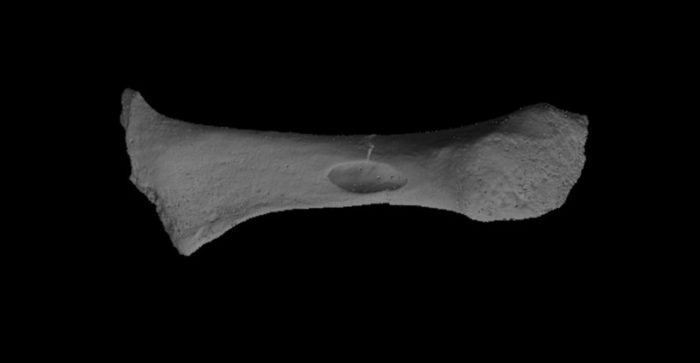Dec 02 2022
Evolution Is Not a Straight Line
 Yesterday I wrote about the fact that technological development is not a straight line, with superior technology replacing older technology. That sometimes happens, but so do many other patterns of change. Often competing technologies have a suite of relative strengths and weaknesses, and its hard to predict which one will prevail. Also, competing technologies may exist side-by-side for long periods of time. Sometimes, after experimenting with new technologies, people may revert to older and simpler methods because they are in the mood for a different set of tradeoffs.
Yesterday I wrote about the fact that technological development is not a straight line, with superior technology replacing older technology. That sometimes happens, but so do many other patterns of change. Often competing technologies have a suite of relative strengths and weaknesses, and its hard to predict which one will prevail. Also, competing technologies may exist side-by-side for long periods of time. Sometimes, after experimenting with new technologies, people may revert to older and simpler methods because they are in the mood for a different set of tradeoffs.
Similarly, biological evolution is not a simple straight line with “more advanced” species replacing more primitive ones. Adaption to the local environment is a relative thing, and many biological features have a complex set of tradeoffs. With technological evolution (any cultural evolution) ideas can come from anywhere and spread in any pattern (although some are more likely than others). Biological evolution is more constrained. It can only work with the material it has at hand, and information is passed down mostly vertically, from parents to child. But there is also horizontal gene transfer in evolution, there is hybridization, and even back mutations. The overall pattern is a complex branching bush, spreading out in many directions. Any long term directionality in evolution is likely just an epiphenomenon.
Paleontologists try to reverse engineer the multitudes of complex branching bushes of evolutionary relationships using an incomplete fossil record and, more recently, genetic analysis. But this can be extremely difficult because it may not always be obvious how to draw the lines to connect the dots. The simplest or most obvious pattern may not be true. A recent discovery involving bird evolution highlights this fact. It is now pretty well established that birds evolved from theropod dinosaurs. The evidence is overwhelming and convincing. Creationists, who predicted that birds would forever remain an isolated group, have egg on their face.
But of course there are a lot of tiny details to be worked out about early bird evolution. One such detail is the palate. In dinosaurs and at least one basal bird group, the group that include ostriches and emus, have a fused palate, and overall less mobile skull. However, 99% of extant birds have an unfused palate, which gives their skull greater mobility, and increased agility for their beaks. This lead to the default straight-line assumption that early birds had fused palates similar to their dinosaur ancestors, but then later birds evolved an unfused palate. Emus and ostriches branched off from the early base of the bird tree, before the unfused palate evolved. This resulted in two groups of extant bird, palaeognaths (old jaws, with fused palates) and neognaths (new jaws, with unfused palates).
Part of the problem with this model, however, is that we don’t have a lot of specimens with well-preserved palates from the critical period of time. This always leaves to door open for one good fossil specimen to change the picture and force a redrawing of the lines – and that’s exactly what happened. The question is – does that original group of ancestral birds, neornithes, have a fused or unfused palate? If fused, then the classic picture is likely true. If unfused, then the classic picture must be false, and we need a new way to draw the lines of evolutionary relationships.
The evidence comes from a specimen of Janavis finalidens, a basal bird fossil. The specimen was actually discovered in the 1990s, and first described in 2002. It is mostly contained within rock, so only a small portion of the fossil itself could be examined. However, the specimen was recently subjected to analysis using CT scanning technology, allowing for a full reconstruction of the fossil. And these researchers found – an unfused palate. This specimen dates from 66.7 million years ago, before the event that killed off the non-avian dinosaurs. This is an early bird ancestor. It still has teeth. This is also before the branching point that lead to emus and ostriches, who have fused palates. How can this be?
The emu group must have evolved a fused palate after they split off from modern basal birds that had already evolved an unfused palate. This can happen through back mutations. In the absence of any evolutionary pressure to maintain an unfused palate, a mutation may have undone the change that led to unfused palates. This would likely not create an identical anatomy to older fused-palate ancestors, but could look sufficiently similar to be confused for a conserved feature. Another example of this general phenomenon comes from the same group of birds, who are secondarily flightless. Ostriches and emus do not fly, but their ancestors did. Yet superficially this makes them more like their even more ancient feathered dinosaur ancestors.
This all makes sense once we abandon the old notion that evolution is inherently progressive, that’s it is working toward a goal, or that it inexorably leads from more primitive to more advanced. None of this is true. Evolutionary forces simply adapt populations to their local environment – whatever direction that may lead. This is almost never a straight line.






